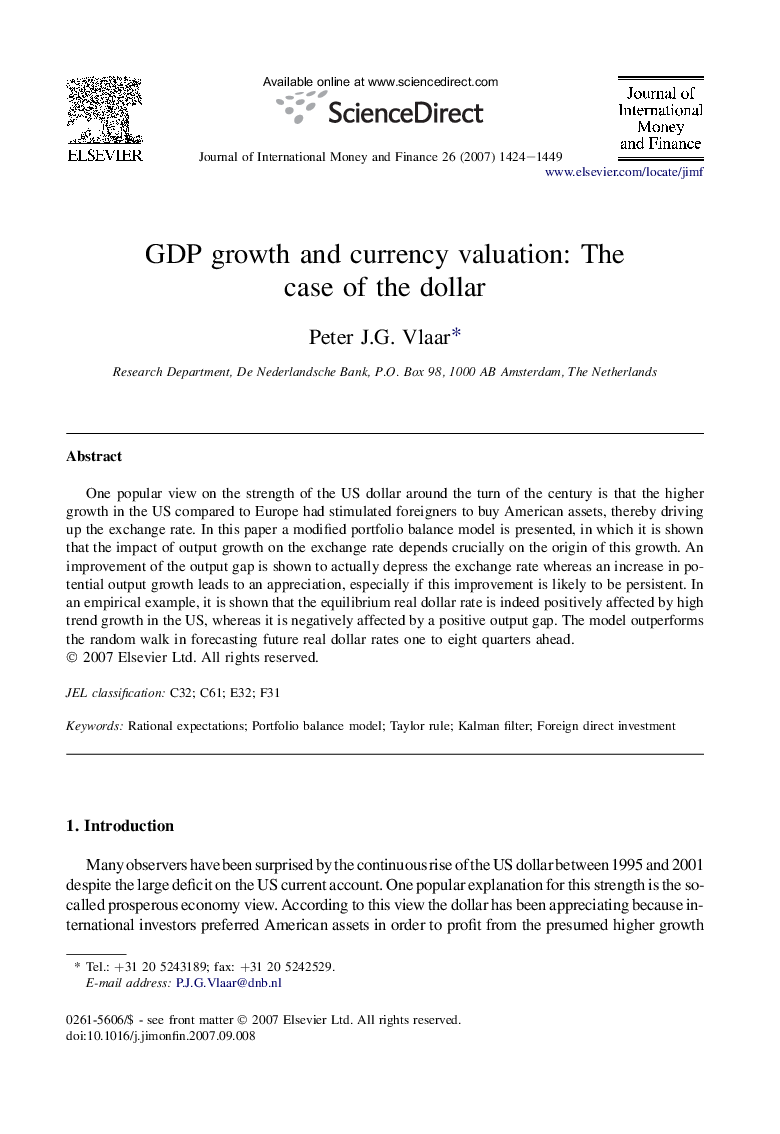| Article ID | Journal | Published Year | Pages | File Type |
|---|---|---|---|---|
| 964842 | Journal of International Money and Finance | 2007 | 26 Pages |
One popular view on the strength of the US dollar around the turn of the century is that the higher growth in the US compared to Europe had stimulated foreigners to buy American assets, thereby driving up the exchange rate. In this paper a modified portfolio balance model is presented, in which it is shown that the impact of output growth on the exchange rate depends crucially on the origin of this growth. An improvement of the output gap is shown to actually depress the exchange rate whereas an increase in potential output growth leads to an appreciation, especially if this improvement is likely to be persistent. In an empirical example, it is shown that the equilibrium real dollar rate is indeed positively affected by high trend growth in the US, whereas it is negatively affected by a positive output gap. The model outperforms the random walk in forecasting future real dollar rates one to eight quarters ahead.
